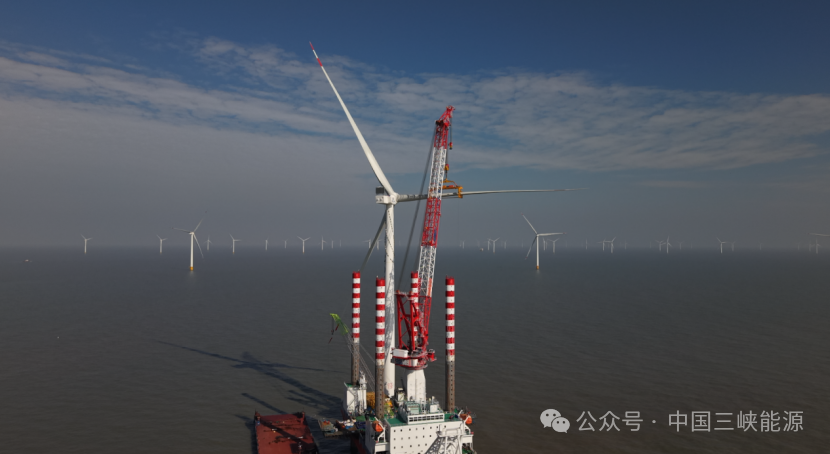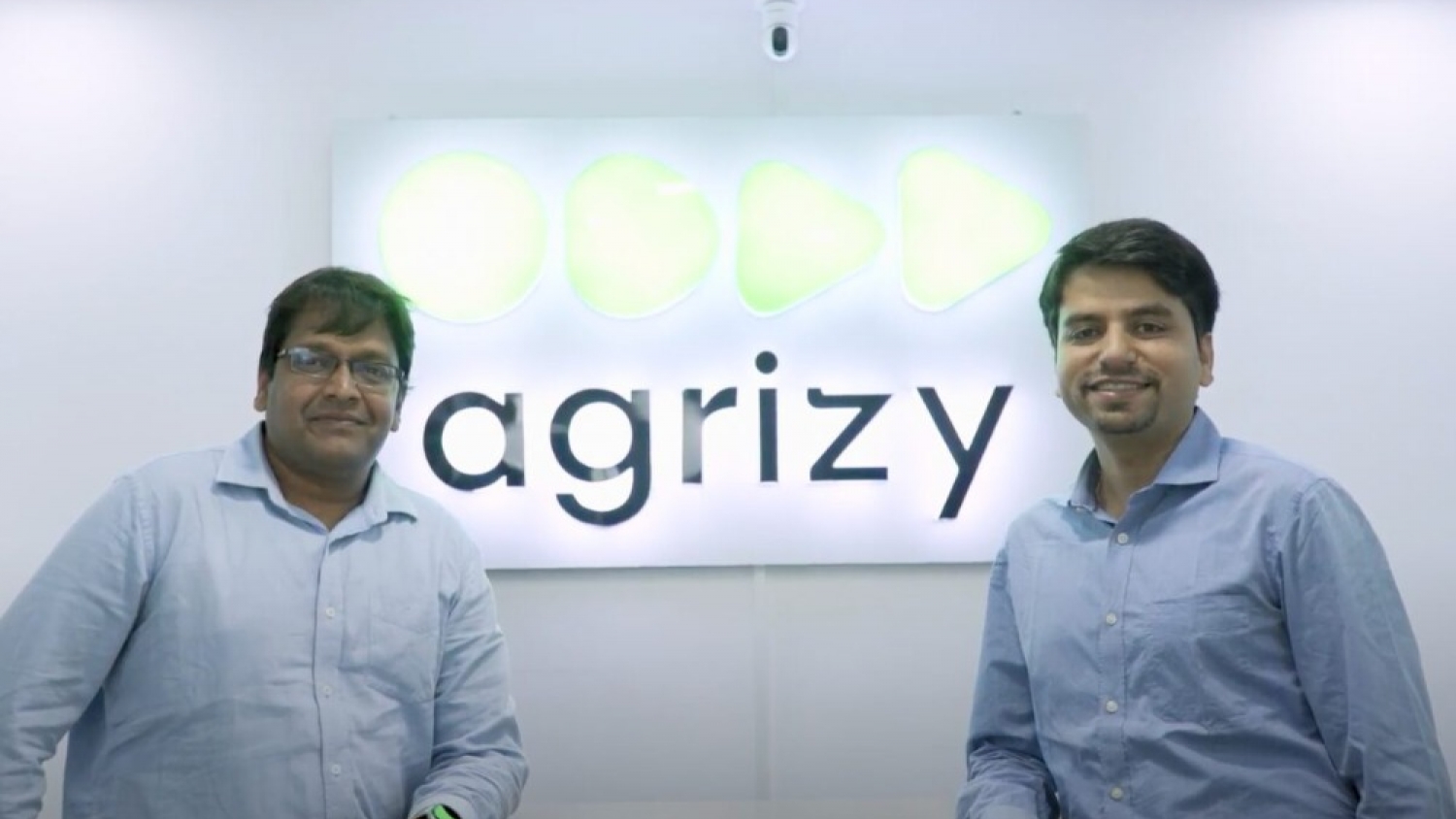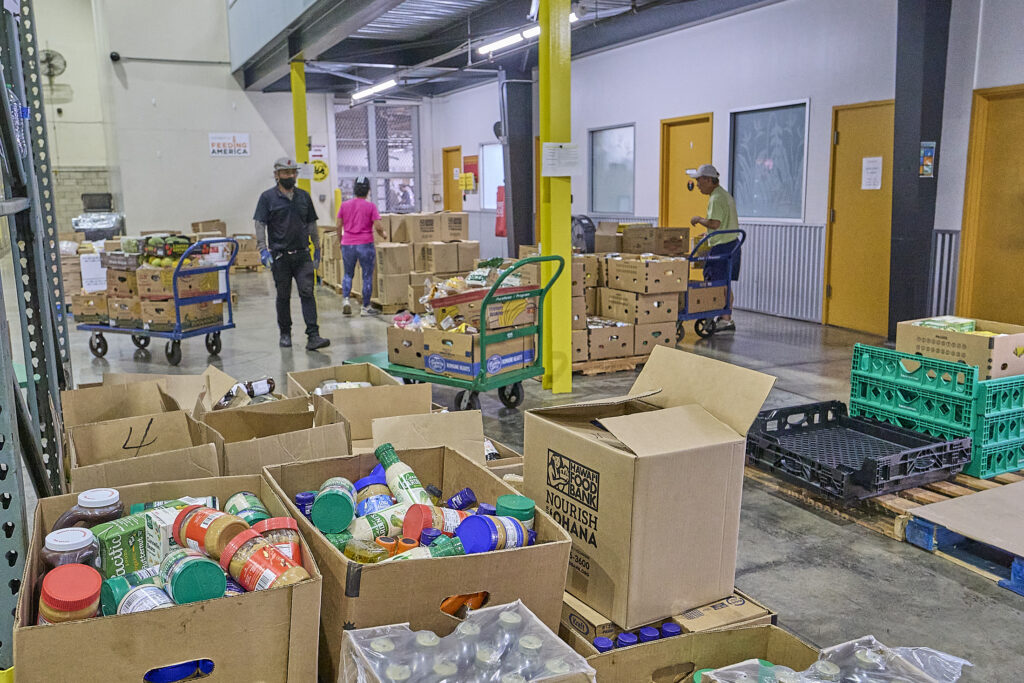Energy and sustainable development nexus: A review
As the global trend toward affordable, clean and efficient energy systems continues to accelerate, there is a real need to enhance the holistic understanding of the nexus between energy and sustainable development. Based on bibliometrics, this review collates and connects the published evidence on the energy and sustainable development nexus, and shows that: 1) there has been a rapid increase in research on the nexus between energy and sustainable development in recent years; 2) nexus research methods mainly include network analysis model, econometric model, input-output model, system dynamics model, and integrated assessment model; 3) low-carbon, efficient and modern energy development has the potential to synergize with all aspects of sustainable development goals. However, there is also the risk of trade-offs with three-quarters of the goals, covering human well-being, material condition, natural environment, and partnerships; and 4) nexus research shows an evolutionary trend from duality to pluralism, from static to dynamic, and from theory to practice. Future research is expected to systematically assess the impact of energy development on larger cross-systems and how energy development could be synergized with comprehensive sustainable development.
1. Introduction
In support of the Paris Agreement, many countries have recently proposed to achieve carbon neutrality. Carbon neutrality will accelerate the establishment of low-carbon, clean and modern energy systems across the international community. At the same time, promoting sustainable development is also a major task for the world's countries, especially developing countries. Transforming our World: The 2030 Agenda for Sustainable Development [1], adopted at the United Nations Sustainable Development Summit 2015, features 17 specific sustainable development goals (SDGs) that figure a blueprint for the development of the world's human well-being, material condition, and natural environment by 2030 (Fig. 1). Given the large number and coverage of SDGs, clarifying the complex nexus between different goals, pursuing their synergies and reducing trade-offs are critical to support the achievement of comprehensive sustainable development.
Fig. 1. Overview of Sustainable Development Goals (SDGs). Waage et al. [2] summarized the 17 goals into three key domains: human well-being, material condition (infrastructure) and natural environment. A detailed introduction of SDGs could be found at https://www.un.org/sustainabledevelopment/.

Energy comes from the natural environment and ecosystems. It is the basis of human activities, the driving force of socioeconomic development, and necessary for improving human well-being and living conditions [3,4]. The use of energy also has feedback effects on the environment [5]. Therefore, energy is linked broadly with the sustainable development of human well-being, material condition, and natural environment. Among the 17 SDGs, SDG7 (Affordable and Clean Energy) puts forward the energy development goal which contains three main constituent targets (sub-goals) to 2030: Target7.1 ensuring universal access to affordable, reliable and modern energy services; Target7.2 increasing substantially the share of renewable energy in the global energy mix; Target7.3 doubling the global rate of improvement in energy efficiency [1]. In the short term, SDG7 points to the direction of energy development until 2030. Solving the problems of energy pollution, energy backwardness, and energy poverty promotes the peaking of carbon emissions in developing countries, and improves national capabilities for low-carbon and sustainable development. In the long term, SDG7 marks the beginning of the thorough replacement of traditional energy with low- and zero-carbon energy and the great improvement of energy efficiency, which paves the way for the entire socioeconomic system to achieve carbon neutrality and comprehensive sustainable development.
In the literature, many studies [[6], [7], [8], [9], [10], [11]] have focused on the analysis of the impact of energy development on one or several specific SDGs, such as on water [[6], [7], [8]] or climate [[9], [10], [11]]. Several recent studies [[12], [13], [14]] have started to call for the need to consider the relationship between energy development and comprehensive sustainable development. For example, Nerini et al. [12] conducted a consensus-based content analysis and proposed 113 SDG targets requiring actions to change energy systems; Soergel et al. [13] used an integrated modelling framework to quantify how 56 indicators across all SDGs would change under different climate policy interventions; and Santika et al. [14] provided examples of quantifications of a range of SDGs into their energy demand. However, knowledge of the nexus between affordable, clean and efficient energy development and sustainable development remains fragmented in the large body of existing research. There is a real need to enhance a holistic and systematic understanding of their nexus. To this end, this review first investigates the current status of research on the energy and SDGs nexus through bibliometrics in Section 2, then details the published literature evidence on the nexus between energy and the full range of SDGs in Section 3, and finally summaries research trends and provides some prospects on future research in Section 4. The review aims to better organize and connect the published evidence on the energy and sustainable development nexus, which may provide some useful information for policymakers to think systematically about strategies and policies that synergize energy and sustainable development.
2. Bibliometrics of the nexus literature
2.1. Literature search
This review begins with a bibliometric survey of the literature [[15], [16], [17], [18], [19], [20]] on the nexus between energy and SDGs. Due to our accessibility to academic databases, we selected the Web of Science database for bibliometrics in the review. As an international authoritative database, Web of Science contains a wealth of research in a wide range of domains [21] and has been used as the only database in many bibliometric studies [[22], [23], [24], [25], [26]]. The literature search process for this review is shown in Fig. 2. Given energy, sustainable development, and nexus as the main topics, we entered the queries “(TS1 = energy or TS = SDG7) and (TS = Sustainable Development) and (TS = nexus or TS = interaction or TS = link or TS = influence)” in Web of Science. With reference to Kar et al. [27] and Hafez et al. [28], the inclusion criteria for the literature were: 1) in English; 2) type of article or review; 3) published between 2010/1/1 and 2022/6/30 (from five years before the release of the 2030 Agenda for Sustainable Development to the present), while the exclusion criteria were: 1) in other languages; 2) type of bibliography, book (chapter), proceeding, report, or other; 3) published before 2010. Following these queries, inclusion and exclusion criteria, we obtained a total of 10,432 articles. By quickly browsing their titles to remove those irrelevant (e.g., out of scope) and duplicate, we obtained 9438 articles. We made statistics on these 9438 articles according to their published years and journals, applied CiteSpace2 [29] to identify high-impact articles, and applied VOSviewer [30] to identify frequencies of keywords and their co-occurrences. To facilitate the delivery of published core and unique evidence in the next section, we further browsed the abstracts of the 9438 articles to remove those with little, ambiguous or essentially repetitive information, and also removed articles without full text. We ended up with 728 articles. In short, in this review, the bibliometrics in this section were conducted with 9438 articles, whereas the evidence in Section 3 was primarily distilled from 728 relatively most relevant articles. Note that although this review is intended to be comprehensive and systematic, it has limitations. For example, it only searched Web of Science for articles in English and therefore missed potential studies in other databases (e.g., Scopus, Google Scholar) or in other languages; it relied on publicly available literature and therefore may have missed the nexus that has not yet been published or studied.
Fig. 2. Flow chart of literature search for this review.

2.2. Basic research status
As observed from Fig. 3(a), before SDGs were proposed in 2015, only a few articles initially discussed the relationship between energy and other factors (mainly water) based on the concept of sustainable development [[31], [32], [33], [34], [35]]. With the formal proposal of SDGs, the number of articles on the nexus between energy and SDGs has been increasing year by year. Fig. 3(b) shows that Journal of Cleaner Production (746 articles), Sustainability (718 articles), and Renewable and Sustainable Energy Review (380 articles) were the journals that published the largest number of nexus articles, together accounting for one-fifth of the total retrieved articles. Meanwhile, Journal of Cleaner Production (23,343 citations), Renewable and Sustainable Energy Reviews (19,354 citations), Energy Policy (7475 citations), and Applied Energy (7178 citations) were the most cited.
Fig. 3. Knowledge graph of the energy and sustainable development nexus research in the literature during 2010–2022. (a) The cumulative number of articles published. (b) Top ten journals in total published articles and their citations (c) Article co-citation (i.e., two or more articles are cited by one or more subsequent articles at the same time) network. The size of the node indicates the frequency of the article cited within the scope of the literature survey here, and the line segment indicates that there is a co-citation between articles. (d) Keyword co-occurrence network. These keywords are derived from article titles, abstracts, and keywords. The size of the node indicates the frequency of the keyword.

The CiteSpace analysis of the 9438 articles identified six important categories, as shown in Fig. 3(c). Climate change is one of the most important issues of concern to the international community. It is found that the nexus between energy and sustainable development is broadly related to climate change (Category#1). One interesting concept in this category is “environmental livelihood security” established by Biggs et al. [36], which features a balance between natural resource supply and human demand for environmental livelihoods in delivering sustainable development under climate change. Articles in both Category#2 (energy-water-food nexus, a typical concrete case of the nexus between energy and SDGs) and Category#4 (nexus informatics) focus on the nexus of energy with water and/or food (for a detailed review of energy-water-food nexus, see Albrecht et al. [37]). Specifically, Category#2 focuses more on case studies of the energy-water-food nexus in specific countries and regions, while Category#4 gradually suggests that energy-water-food should be combined with other concepts in subsequent nexus research. For example, Rasul [38] studied energy-water-food development in South Asia (Category#2); Liu et al. [39] argued that energy-water (-food) studies should be coupled with other SDGs to enhance synergies among more goals (Category#4). In Category#3 (planetary boundaries), the 2030 Agenda for Sustainable Development is the most cited. In addition, Pradhan et al. [40] conducted a preliminary analysis of the correlation between indicators representing energy and SDGs in 227 countries. Articles in Category#5 (economic growth) conceptually put forward some directions of SDG research from an economic perspective. For example, Le Blanc [41] proposed to create an SDG interaction network at the economic development level. Articles in Category#6 mainly focus on energy consumption. For example, Ringler et al. [32] explored how to optimize the energy-water-land-food nexus framework to improve energy use efficiency.
The VOSviewer analysis of article titles, abstracts and keywords highlighted the vocabulary with an occurrence frequency of more than 50 times, as shown in Fig. 3(d). It can be found or verified that: 1) relationships do exist between SDGs, and studies on energy have already involved SDGs such as “food” (SDG2), “education” (SDG4), “water” (SDG6), “urbanization” (SDG11), and “global warming” (SDG13); 2) studies on energy have covered many energy-related aspects, such as “renewable energy”, “energy efficiency”, “fossil fuel”, “energy consumption”, “CO2 emission”, “energy production”, “biomass”, and “economic development”; 3) the main research subjects are mostly developing countries, such as “China” and “India”; 4) the main research purpose is likely to serve “policymaker”; and 5) many studies are likely to be conducted using a “model”.
2.3. Nexus research method
Table 1 further summarizes the main methods used in the literature for the energy and SDGs nexus research. Indeed, the main method is “model”. Based on a literature survey, Büyüközkan et al. [42] assessed the interaction of renewable energy with climate, economy, politics and industries, and applied an analytic hierarchy process to propose a wind-centered energy development plan for Turkey. Lamichhane et al. [43] conducted a principal component analysis of more than 90 explanatory variables for OECD (Organization for Economic Co-operation and Development) countries’ sustainable development performances, and found that SDG1, SDG7, SDG11 and SDG17 had been improved. Zhang et al. [44] evaluated the spatial and temporal variation of SDG interactions including SDG7 in China using a network analysis model. Some studies applied econometric models to quantify the relationship between energy and other factors, such as energy-water-food in the BRICS countries [45]. As an important method for studying material flows, input-output models have been widely used in the energy-water nexus research. For example, Wang and Chen [46] developed a multi-regional input-output model to assess the current status of energy and water use in Beijing-Tianjin-Hebei in China; White et al. [47] integrated energy, water and food with the global trade environment, and applied an inter-regional input-output model to assess the demand for these resources in East Asia. Collste et al. [48] developed a system dynamics model to analyze the synergetic development of air quality, energy, and education in Tanzania. As SDG research continues to evolve, integrated assessment models, which are widely used to develop future energy development scenarios in the Sixth Assessment Report (AR6) [49] and the Special Report on Global Warming of 1.5 °C (SR15) [50] of the Intergovernmental Panel on Climate Change (IPCC), have also started to incorporate SDG7 and other SDGs into the modelling framework to provide scenario-based analysis of the synergy or trade-off among them. For example, Iyer et al. [51] quantified the impacts of nationally determined contributions (NDCs) on energy development, air quality, food safety, and marine ecology for 32 regions within the Global Change Assessment Model.
Table 1. Main methods used in existing energy and SDGs nexus studies.
| Method | Brief introduction | Literature |
|---|---|---|
| Analytic hierarchy process | Comparing and evaluating different development plans for energy and SDGs according to multiple criteria or principles, determining the order of these plans and making choices | [42] |
| Principal component analysis | Calculating the correlation of indicators that represent energy and SDGs through a principal components analysis, and further analyzing sustainable development performance based on indicator characteristics | [43] |
| Network analysis model | Using the Pearson coefficient or RV coefficient to analyze the correlation of indicators for energy and SDGs, calculating the joint growth rate of the indicators and quantifying the degree of synergy | [44,52] |
| Econometric model | Quantifying the correlation and sensitivity among variables representing energy and SDGs based on the least-squares approach, which can also be used for prediction | [45,53,54] |
| Input-output model | Relying on national, regional and global economic input-output tables to track the material flow caused by production and consumption activities and the associated impact on energy and SDGs | [46,47,55] |
| System dynamics model | Transforming the behavior mode of an energy system into a model formed by SDG-related variables with positive and negative feedback | [48] |
| Integrated assessment model | Using an integrated modelling framework that incorporates multiple systems such as energy, society, economy, and environment to explore the complex nexus of multiple SDGs, which is usually conducted through scenarios | [51,56,57] |
3. Nexus between energy and sustainable development
3.1. Point-to-point evidence
Energy and No poverty (SDG1). Many studies believe that there is a synergy between energy and poverty eradication. Nerini et al. [12] proposed that promoting energy development could bring new jobs, inspire new industries, and increase the income of the poor; without energy, it is impossible to end poverty. Xu et al. [58] found that developing photovoltaics (PV) in China's rural areas could help eradicate poverty (known as “PV poverty alleviation” in China). Improving energy efficiency will save energy. The saved energy resources could be used to build more infrastructure or produce more basic materials to help alleviate poverty [59]. At the same time, clean energy development helps improve climate conditions and reduce environmental pollution, thereby reducing the number of people living in poverty due to severe or extreme weather [60]. However, some studies also indicate that energy development may sometimes exacerbate poverty (trade-off). For example, “PV poverty alleviation” projects in some rural areas in China had a funding gap in the initial stage and required loans by local residents, which increased the burden on the poor [61]. Therefore, appropriate financial support policies should also be prepared to make such energy projects affordable for the poor.
Energy and Zero hunger (SDG2). Affordable, reliable and modern energy can help reduce hunger and increase food security. For agriculture, establishing a widely-covered power grid improves agricultural mechanization and modernization, which can enhance the efficiency and yield of food production [62]. As mentioned above, decarbonizing the energy structure helps improve the climate environment [63]; this is conducive to increasing food production and avoiding loss. For example, climate change might lead to a more than 10% reduction in maize and sorghum yields in South Asia, which could be avoided by decarbonizing the energy mix [64]. Note that bioenergy and hydropower are quite relevant to agriculture. First-generation food-based bioenergy might lead to a 35% increase in global food prices in a 2 °C future [65], but the development of second- (non-food) and third-generation (algae) bioenergy could avoid competition with food [66]. Hydropower may interfere with agricultural irrigation; in the dry season, there is a trade-off between irrigation and power generation for water needs [67]. In addition, while the establishment of good energy supply facilities can improve irrigation systems, it may also lead to a shift in agricultural production from food staples to cash crops, affecting local food supply [68,69].
Energy and Good health and well-being (SDG3). Developing affordable, clean energy to replace high-emission, high-pollution fossil energy provides co-benefits for the environment, climate, and human health. The combustion of conventional fossil fuels produces large amounts of air pollutants, such as SO2, NO2 and PM, leading to more than five million deaths worldwide each year from cardiovascular, respiratory, lung cancer, and hypertension [70]. The greenhouse effect caused by excessive use of fossil energy may exacerbate psychological problems such as post-traumatic stress disorder, depression, excessive anxiety, mental illness, and suicidal tendencies [71]. In contrast, a reduction in CO2 emissions per million tones might reduce the number of deaths caused by the greenhouse effect by 34–161 per year in China [72]; through universal access to clean fuels such as electricity and biogas, the probability of cooking-induced diseases might be reduced by one-third in low- and middle-income countries [73]. In addition, energy is essential to the operation of hospitals, medical centers and healthcare facilities.
Energy and Quality education (SDG4). There is a clear synergy between the development of energy and the improvement of education quality. A modern energy system provides the infrastructural foundation for education to flourish. A reliable electricity supply network is essential for universities and schools to carry out educational and teaching activities [74]. Universal access to affordable modern energy is particularly important for improving educational conditions and promoting learning opportunities in remote and backward areas [75]. In turn, good education not only helps the public understand the value of sustainable development and makes it easier to implement energy policies, but also enhances the capability of energy sector staff [76]. According to a study of the APEC (Asia-Pacific Economic Cooperation) countries, education could improve modern energy use and environmental awareness; for every 1% increase in education level, CO2 emissions could be reduced by 0.169% [77].
Energy and Gender equality (SDG5). Energy modernization and renewable energy development can accelerate the upgrading of energy and industrial structures and optimize the allocation of industrial resources. As a result, the number of jobs suitable for women is expected to increase substantially [78]. Affordable energy prices lower the cost of living for households and perhaps create some additional educational opportunities for women and girls. Women could therefore compete more fairly with men in middle and senior level jobs, and their employment, income, work environment, and social status are expected to improve [79]. In addition, in many families, women are often the cooks. Clean cooking fuels can reduce the harm to their bodies [80]. However, there are case studies that warn about trade-off risks. For example, with affordable electrification in some traditional rural areas of developing countries, men may spend more time on leisure and relaxation, such as watching television and surfing the Internet, while women have to take on additional work previously performed by men, increasing local gender inequality [81].
Energy and Clean water and sanitation (SDG6). Conventional energy is usually utilized through combustion and requires water to cool the equipment. Developing clean energy and improving energy efficiency can reduce the need for cooling and thus save water. For example, conventional tower thermal power plants consume 550–10,000 L/MWh of water, but solar power consumes only 125 L/MWh [82]. Using waste heat from nuclear power reactors to desalinate seawater can help obtain more freshwater resources [83]. However, there may be trade-offs between energy and water. For example, natural gas drilling fluids that seep into aquifers contaminate groundwater resources; improper discharge of wastewater from energy use pollutes freshwater; hydropower development may lead to evaporation losses of water, damaging water-related ecosystems and affecting downstream water use [84]; and hydrogen production from electrolysis of water by renewable electricity (green hydrogen) requires more water than from fossil feedstock (grey and blue hydrogen) [85]. In addition, the construction of modern energy systems can better sustain the operation of water transmission, pumping, and purification facilities, which helps ensure universal access to clean drinking water [[86], [87], [88], [89]]. Due to the close linkage between energy and water, the energy-water nexus has formed a relatively mature research architecture in the literature [90,91], as reflected in bibliometrics.
Energy and Decent work and economic growth (SDG8). Energy access and development promotes jobs and employment and underpins economic and social development. During the low-carbon energy transition, energy, industrial and economic structures and employment patterns are expected to undergo rapid changes, which will provide new opportunities for a country to reshape social productivity and improve international competitiveness. An irrational energy transition that does not take into account the development circumstance and inertia is detrimental to the economy and can lead to massive job losses in traditional industries [92,93] (trade-off); in contrast, the orderly development of clean energy can help steadily decouple economic growth from fossil energy and environmental degradation [94], thus improving the quality and sustainability of the economy and providing more decent works. For IEA (International Energy Agency) members, every 1% increase in renewable energy consumption might have the potential to grow the economy by 0.29% [95]. For China, if carefully planned, the development of wind and PV industries could drive 2.8 million job growth by 2050 under a 1.5 °C scenario, fully offsetting the loss of 2.2 million jobs from the reduction of the coal power industry [96]. Moreover, the world is now widely connected through energy networks, and even local energy developments may influence global energy markets and employment [97].
Energy and Industry innovation and infrastructure (SDG9). Energy development spurs industry innovation [98] and infrastructure renewal. For example, a significant increase in the share of renewable energy requires an accelerated shift away from coal industries and investment in new infrastructure. A strong and resilient infrastructure, in turn, is a major prerequisite for energy development. Digital, informationized and intelligent modern infrastructure, as well as advanced industrial technologies such as big data and block-chain, can improve energy efficiency and innovation and facilitate universal access to reliable modern energy services [99]. For example, China's high-speed rail reduced energy intensity of cities along railways by 9.3% [100]. However, there are trade-off risks, too rapid energy decarbonization potentially leading to temporary industrial unrest [101], and the transfer of energy-intensive industries from developed countries to the detriment of industrial innovation and new infrastructure development in developing countries [102]. It is important to emphasize that delivering SDG7 or energy transition does not mean blindly phasing out existing conventional infrastructure without assessing its impact on the entire chain and stranded assets and the capability of new infrastructure to fill the gaps [103]. Under carbon neutrality, developing countries should make prudent decisions regarding their existing fossil fuel-based infrastructure (e.g., coal power capacity) to ensure the security of energy supply [104].
Energy and Reduced inequalities (SDG10). Ensuring energy affordability and universality often helps reduce energy poverty and improve local, national and global inequalities in multiple ways. As mentioned earlier, improving energy efficiency can reduce material inequality by directing more energy resources to improving material conditions. In building modern energy systems, energy supply is expected to be progressively decentralized, allowing the public to have more equal and easier access to energy services, such as electricity and heat. Electricity is vital for the dissemination of knowledge and information, which improves educational inequality [75]. Some studies show that energy development plays an important role in increasing the income of the poor and reducing income inequality [105]. A 1% increase in the number of people access to electricity might reduce global income inequality by 0.05% [106]. However, there are also studies that argue for a trade-off between energy and reduced inequalities. For example, because it is often more difficult to attract capital inflows than developed countries, developing countries tend to face greater pressure on government public expenditure for an affordable clean energy transition [107]; accelerating the phasing-out of fuel cars and the spread of electric vehicles would severely affect traveling cost and efficiency for people in cold regions, leading to geographic inequality [108]; subsidizing roof PV may be biased against people who do not own a house [109]. In short, affordability matters. If energy prices are expensive for the poor or vulnerable, inequalities would get worse even if the energy mix is cleaner.
Energy and Sustainable cities and communities (SDG11). Cities are densely populated, asset-intensive, and vulnerable to disasters [110]. The use of fossil energy causes urban pollution to a greater or lesser extent, for example, traffic fuels cause urban air pollution. Energy modernization and decarbonization can promote urban modernization and inclusiveness, reduce urban climate risks, improve urban air quality, and protect urban ecology [111]. For example, a reliable and efficient power supply is a prerequisite for providing high-quality living services to city residents, popularizing low-carbon transportation modes such as subways and electric vehicles, and building safe and carbon-neutral residential, commercial, and business districts [112]. It is also noted that urban layout may have an impact on the diffusion of clean energy [113]. Urban spatial-based planning and management is beneficial for achieving synergic sustainable development of energy and cities.
Energy and Responsible consumption and production (SDG12). The massive use of fossil energy for consumption and production leads to environmental irresponsibility, and the relatively low energy efficiency of the past leads to energy waste [114]. In order to deliver sustainable and responsible development, fundamental changes in past production and consumption patterns are required. Some studies argue that improving energy efficiency increases social productivity, which may expand the demand for the quantity and type of resources; therefore, the total amount of resources consumed by society may not be saved (known as the “rebound effect”) [115,116]. In addition, there is the controversy that the development of nuclear electricity production is irresponsible for the safety of society [117] (trade-off). However, most studies justify that the development of clean and efficient modern energy helps reduce waste [118,119] and pollution and is an important way to establish low-carbon, environmental-friendly and responsible consumption and production throughout the entire socioeconomic system [120,121].
Energy and Climate action (SDG13). SDG13 is actually consistent with the requirements of the United Nations Framework Convention on Climate Change [122] and the Paris Agreement [123]. As bibliometrics show, energy is highly correlated with climate change. CO2 and other greenhouse gases produced from the use of fossil energy are the main anthropogenic cause of global warming. Replacing fossil energy with non-fossil energy and substantially increasing the share of renewable energy in the energy mix are acknowledged as core measures to achieve carbon neutrality and combat climate change and its impacts [49]. The IPCC AR6 suggests that in order to limit warming to below 1.5 °C, the share of low-carbon energy in the global primary energy supply might need to exceed 70% by 2050 [49]. For China to achieve its 2060 carbon neutrality, the share of non-fossil energy might need to reach approximately 80% by 2050 [124]. Responsibility for and exposure to global climate change varies by region and country [[125], [126], [127]]. Although accounting for only a small fraction of global emissions, low-income countries and small island states are the most vulnerable to the impacts of climate change [125]. The process of decarbonization of energy systems in developed countries and large emitters will largely determine future temperature increases [[128], [129], [130]]. They should align their energy transition with global climate governance, and lead more ambitious actions to strengthen the NDCs and achieve carbon-neutral energy systems.
Energy and Life below water (SDG14). The ocean is rich in energy. Marine energy that has been gradually put into use mainly includes offshore wind energy, offshore solar energy, tidal energy, wave energy, and marine bioenergy. Stable marine ecology provides a sustainable output environment for marine energy [131]. However, the construction of offshore energy facilities, such as offshore drilling platforms and wind turbines, compresses the space for marine life and may damage the marine ecological environment [132]; and nuclear leaks may cause significant damage to life below water and on land and even entire ecosystems [133] (trade-off). In addition, the burning of conventional fuels releases large amounts of CO2, which forms carbonic acid in the seawater and exacerbates ocean acidification. It is expected that clean energy can be popularized in marine operations as early as possible to conserve the marine ecosystem [134]. For example, climate change might reduce marine fishing potential in Indonesian zones by more than 20%, which might be avoided by popularizing clean energy [135].
Energy and Life on land (SDG15). Appropriate development of modern energy in poor and backward areas can reduce the demand for fuelwood and reduce the destruction of forests, grasslands and land, thereby preserving terrestrial and vegetative creatures and maintaining the local ecosystem and biodiversity [136]. Conserving biodiversity can provide both nature-based solutions (carbon sinks) and technological solutions (bioenergy with carbon capture and storage (BECCS)) for achieving carbon neutrality. However, there may also be trade-offs between the development of energy and the conservation of land and biodiversity. For example, the construction of wind turbines and PV may take up useful land and ecological space; improper collection of biological materials would disrupt the inherent biological chain and cause irreversible damage to the ecological environment [137]; geothermal exploitation may accelerate the loss of stratigraphic water and cause land subsidence [138]; and a heavy reliance on BECCS to offset CO2 in the future would have side effects on land, biodiversity, food and water [[139], [140], [141]]. It is emphasized that the protection of life (both on land and below water), biodiversity and other critical ecological resources must be prioritized when developing energy.
Energy and Peace justice and strong institutions (SDG16). Energy development has inspired the establishment of many government institutions and international organizations (e.g., the IEA) that help provide a peaceful, just and rules-based environment for energy and related activities. Peaceful societies, equitable access to justice, and accountable institutions are important safeguards for energy development at all levels. For example, differences in access to energy endowments may lead to political and violent conflict; some hydropower and nuclear developments may lead to local social conflict and discord if affected residents are not adequately consulted [142] (trade-off). The involvement of fair, value-neutral, and credible institutions can serve as a bridge of communication to help resolve these disputes and make more locally appropriate energy decisions. Due to the significant national and international energy connections, an unpeaceful and unjust environment, even locally, may affect international energy supplies and prices, potentially leading to energy shortages in countries with high import dependence [143]. In some regions where market conditions are poor and market rules cannot work, impartial intervention by government institutions is a key driver of energy development [144].
Energy and Partnerships for the goals (SDG17). Energy has initiated many partnerships among countries in a wide range of areas such as resource, technology, finance, and knowledge. For example, renewable energy technologies and investments are an important element of the “Belt and Road” Initiative [145]. Partnerships can play an important role in global energy interconnection, sharing and cooperation to drive modernization and sustainability of energy systems on a global scale. Especially during the COVID recovery period, active partnerships among countries can promote political consensus on energy issues, increase enthusiasm for the development of renewable energy, and reduce barriers and costs to energy development. However, nuclear energy development may hinder interregional cooperation due to different perceptions of and reliance on nuclear energy [146]; and differences in the competitiveness of renewable energy technologies may also lead to trade conflicts and damage to partnerships [147] (trade-off). More inclusive bilateral and multilateral negotiations, rather than unilateral adjustments, can better resolve those conflicts and promote win-win partnerships.
3.2. Summary and implication
The point-to-point review clearly shows that there are nexuses between energy and all 16 other SDGs. While the exact nexus may depend on the context, a strong indication is that the transition to low-carbon and efficient energy systems that provide universally affordable, reliable and modern energy services has the potential to create synergies with all aspects of SDGs, reflecting the need to transform energy systems in order to deliver SDGs. This also reinforces the importance of achieving carbon neutrality. By promoting greener, healthier, and more climate-resilient energy systems, carbon neutrality can serve as a supporting lever for all-round sustainable development. However, literature evidence also warns that if energy transition and clean energy development are not properly rolled out, trade-offs may occur with three-quarters of goals, including human well-being (SDG1, SDG5, SDG10 and SDG16), material condition (SDG2, SDG6, SDG8, SDG9 and SDG12), natural environment (SDG14 and SDG15), and even partnerships (SDG17). Therefore, in the pursuit of SDG7 and carbon neutrality, policymakers should no longer consider energy development in isolation, but need to simultaneously consider compatibility with sustainable development and make decisions from a systematic perspective. Energy development targets, policies and measures, when contextualized and with attention to balancing rapid action and prudent planning, can help reduce trade-offs and increase synergies between energy and SDGs.
Note that if the growing demand for energy services is accessed predominantly through fossil energy rather than clean energy, which may occur where economies and decarbonization capacities lag far behind, additional trade-offs with SDG3 (good health and well-being), SDG11 (sustainable cities and communities) and SDG13 (climate action) may arise (the literature surveyed in this review did not clearly show a negative impact of energy development on quality education; however, this does not necessarily indicate that there are absolutely no trade-offs between SDG7 and SDG4). In particular, climate change caused by fossil energy consumption has huge worldwide impacts and will adversely affect almost all SDGs [148]. To fully achieve sustainable development, climate change mitigation and just transition worldwide, the international community should further work together and support each other. In addition to reducing fossil energy consumption and increasing the share of non-fossil energy with the greatest ambition, developed countries should provide financial and technological support to help developing countries improve their capabilities to decarbonize their energy systems without compromising SDGs [49,123,149]. With international support and investment, developing countries could do well to accelerate the development of renewable energy and to meet the growing demand for energy services with low-carbon energy wherever possible. All countries should enhance the sharing of knowledge, experience, actions and policies for energy development, and strengthen cooperation and partnerships to improve renewable, efficient, energy-saving and emissions-reducing technologies.
4. Research trend and prospect
4.1. Research evolution trend
From duality to pluralism. Fig. 4 shows the development of the nexus studies of energy with SDGs in the literature: from duality nexus such as energy-water [91], energy-food [150], energy-poverty [151], and energy-climate [152] to ternary nexus such as energy-water-food [153], energy-health-climate [154], energy-poverty-climate [155], and energy-water-climate [156]. As extremely important material resources, energy, water, and food influence not only the development of material condition, but also the development of human well-being and natural environment. Therefore, some studies have further coupled energy-water-food with another goal to carry out quaternary nexus, such as energy-water-food in the context of poverty alleviation [157], the impact of university education on energy-water-food [158], and the impact of energy-water-food on human health [159]. Several studies have also attempted to construct a quinary nexus of energy, water, food, climate change, and social justice [160]. In the future, energy-related nexus research could continue to better connect, extend and enrich the evidence to paint a more nuanced picture of energy and sustainable development.
Fig. 4. Trends in the study of the energy and sustainable development nexus: from duality to pluralism.

From static to dynamic. Early studies mainly focused on the static nexus between energy and SDGs at a snapshot in time [12,38,161], while subsequent studies gradually began to examine the dynamics of the nexus across time. Using a correlational network, a recent study by Wu et al. [162] showed that some SDGs decoupled and then recoupled as sustainable development progressed; they therefore emphasized the need to analyze the evolution of SDG interactions. Some studies have also attempted to use scenario analysis to explore the dynamic nexus between energy and SDGs in the future. For example, the scenarios in Howard et al. [154] found that the clean energy development, initially characterized by high costs, had limited effects on improving public health and reducing medical expenditures; however, as energy efficiency continued to improve, the large-scale penetration of renewable energy would gradually promote physical health and improve the overall economic benefits to society. In achieving energy transition and sustainable development, dynamic nexus analysis can help policymakers adjust targets, policies and measures to the latest context and development requirements in a timely manner.
From theory to practice. Early SDG nexus studies put forward theoretical concepts [36,161]. Based on interdisciplinary knowledge of the potential nexus between energy and SDGs, Nerini et al. [12] called for future research to better support the implementation of SDG7 in practice. In recent years, studies have gradually started to veer toward guiding practice. For example, Weitz et al. [163] analyzed how SDG7's Target7.2 and Target 7.3 interacted with targets of other SDGs in Sweden to support priority setting in the country's policies and plans; Ramos and Laurenti [164] used regression analysis to analyze the relationships between Spain's SDGs to help the country develop a roadmap to achieve sustainable development; based on global data from 2000 to 2016, Hegre et al. [165] evaluated SDG compatibility through principal components analysis to help the international community formulate SDG development strategies. With carbon neutrality, recent studies have started to focus on the carbon-neutral transformation of energy systems [[166], [167], [168], [169], [170]], but there are still gaps in research on the pathways, mechanisms and supporting policies for synergizing energy and SDGs under carbon neutrality.
4.2. Prototype research framework
Establishing a sound nexus framework can help better articulate synergies or trade-offs among multiple goals, and systematically reveal potential impacts of different development targets, policies, and scenarios on nexuses [171]. This can assist policymakers in designing better strategies to coordinate sustainable development. As shown in Fig. 5, this review further proposes the following four-step prototype research framework for scientific analysis of the energy and sustainable development nexus.
Fig. 5. A four-step prototype research framework for scientific analysis of the energy and sustainable development nexus.

Defining research boundary. The first step is to define the research boundary according to key factors such as the context and socioeconomic development stage of the research subject (e.g., country, region, city). Research subjects in different circumstances and stages of development may have different priorities in energy development. For example, for some poor islands, the first priority is often to ensure universal access to affordable energy as early as possible [172]; while for regions that already have universal energy access and propose carbon neutrality, the first priority is often to increase the role of renewable energy, improve energy efficiency, and establish highly decarbonized energy systems [173].
Building nexus system. The second step is to identify the SDGs that need to be particularly focused on for the research subject in parallel with energy development, according to contextualized factors such as actual needs and priorities for sustainable development, public aspirations, existing policies and scientific perceptions, to build the nexus research system. The constructed nexus system with different coverage of SDGs serves different research and decision-making needs. For example, an energy-water nexus system informs a synergic development pathway for the two goals; while an energy-water-food-climate system not only informs the energy-water-food interaction, but also reflects the feedback of the climate system to material resources [174].
Selecting suitable indicators. The third step is to select appropriate indicators to represent the SDGs in the constructed nexus system. Each SDG may be represented by optional indicators. For example, renewable energy in SDG7 could consider all or specific types of renewables; water resources in SDG6 could include groundwater, surface water, recycled water, desalinated water, and precipitation. The Inter-agency and Expert Group on SDG Indicators (IAEG-SDG) classifies the indicators that could represent SDGs into three tiers (Table 2). As sustainable development advances, the number of Tier1 indicators which have relatively high data integrity gradually increases, providing an increasingly strong data foundation for quantitative studies of SDGs.
Table 2. Tiers of SDG indicators defined by the IAEG-SDG (https://unstats.un.org/sdgs/iaeg-sdgs/tier-classification/) as of June 30th, 2022.
| Classification | Definition | Number of indicators |
|---|---|---|
| Tier1 | Indicator is conceptually clear and has an internationally established methodology and standard to quantify. Data are regularly produced by at least 50% of countries | 136 |
| Tier2 | Indicator is conceptually clear and has an internationally established methodology and standard to quantify, but data are not regularly produced by countries | 91 |
| Tier3 | No internationally established methodology or standard to quantify, but methodology/standard is being or will be developed or tested. | 0 |
| Multiple tiers | Different components of the indicator belong to different tiers | 4 |
Assessing nexus relationship. The final step is to assess the nexus between energy and SDGs. Different energy development targets, policies and pathways may lead to different evolution of SDG indicators [13]. Existing studies have created energy development scenarios under, for example, carbon neutrality, representative concentration pathways, and shared socioeconomic pathways [39,40,148]. After setting energy development targets and scenarios, quantitative methods such as integrated assessment models, system dynamics models, input-output models or econometric models can be applied in combination with qualitative methods such as literature surveys and expert consultants to assess the dynamics of SDG indicators and their interactions, thus providing policy implications for energy and sustainable development synergies in practice.
4.3. Going forward
In conclusion, serving the practical needs of human society and habitat system development is a critical starting and ending point of nexus research. The development of energy systems toward carbon neutrality will radiate and have lasting effects on all aspects of society, economy and environment. Therefore, nexus research could move beyond discussions of material resources, such as energy-water-food, to larger cross-systems. More research could be done on the impact of the transition to low-carbon efficient energy systems on important human and non-material elements, such as social equality, income distribution, welfare and well-being, talent education, and natural environment, as well as on synergic strategies and mechanisms between energy and multidimensional SDGs. A “new-era” nexus for energy development – spanning the domains of human well-being, material condition, and natural environment – is urgently expected to provide more granular and context-specific evidence, data, suggestions and solutions to align energy development with the full range of sustainable development.
What is Your Reaction?
 Like
0
Like
0
 Dislike
0
Dislike
0
 Love
0
Love
0
 Funny
0
Funny
0
 Angry
0
Angry
0
 Sad
0
Sad
0
 Wow
0
Wow
0


















































.jpg.webp?itok=0ZsAnae9#)






/environment-climate-change-and-health-(ech)/water-sanitation-hygiene-and-health-(wsh)/landfill-tuvalu-36092.tmb-1200v.jpg?sfvrsn=5c21fe40_1#)

















